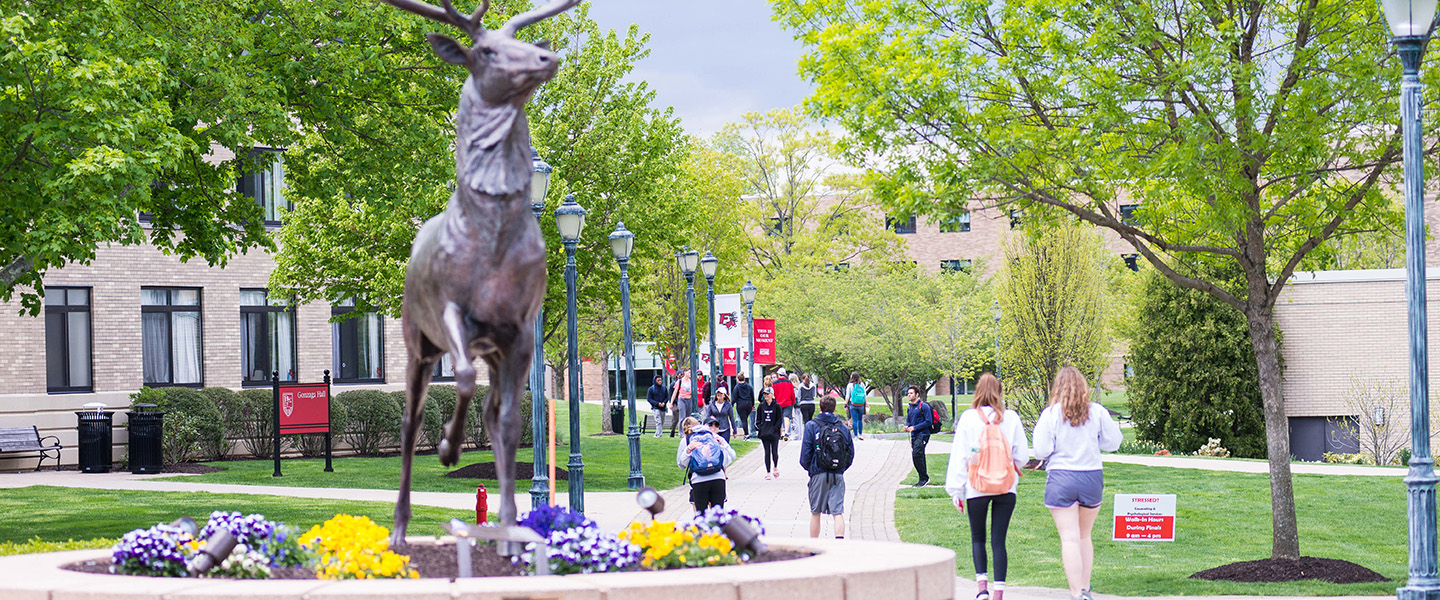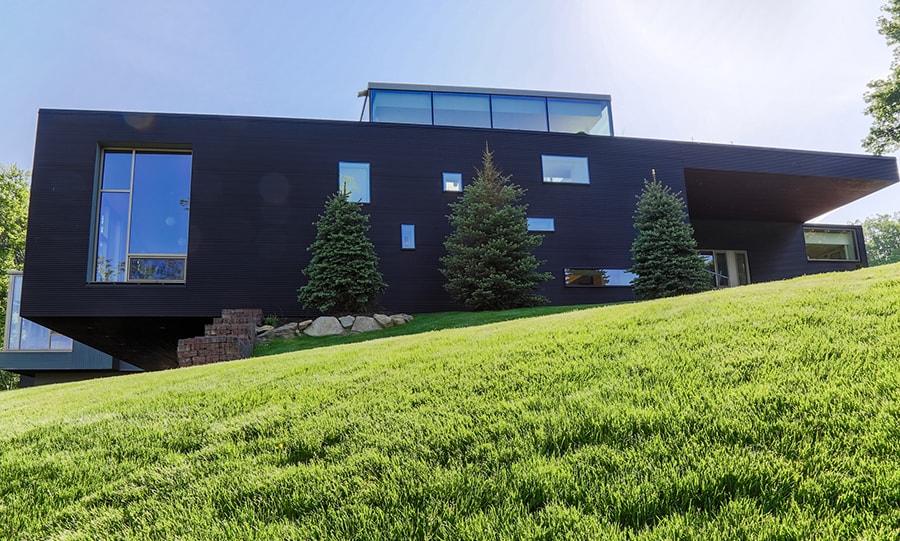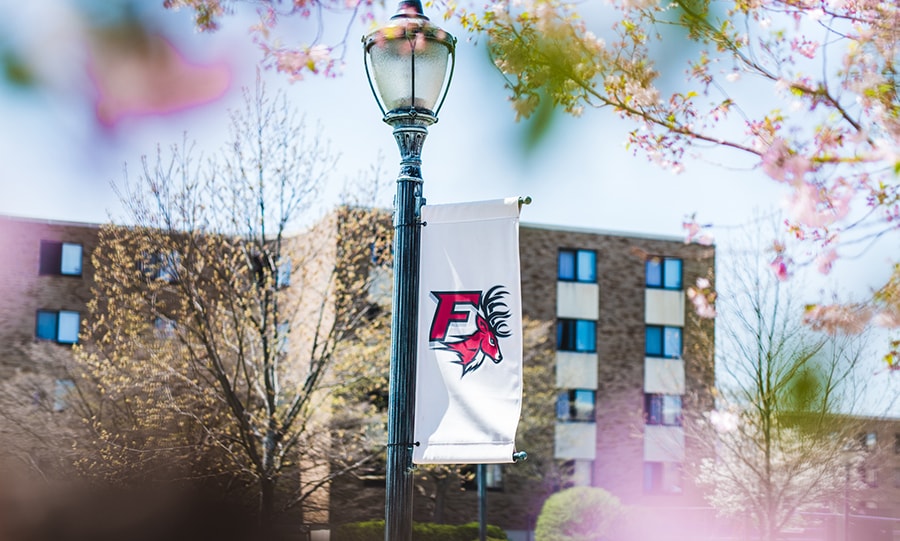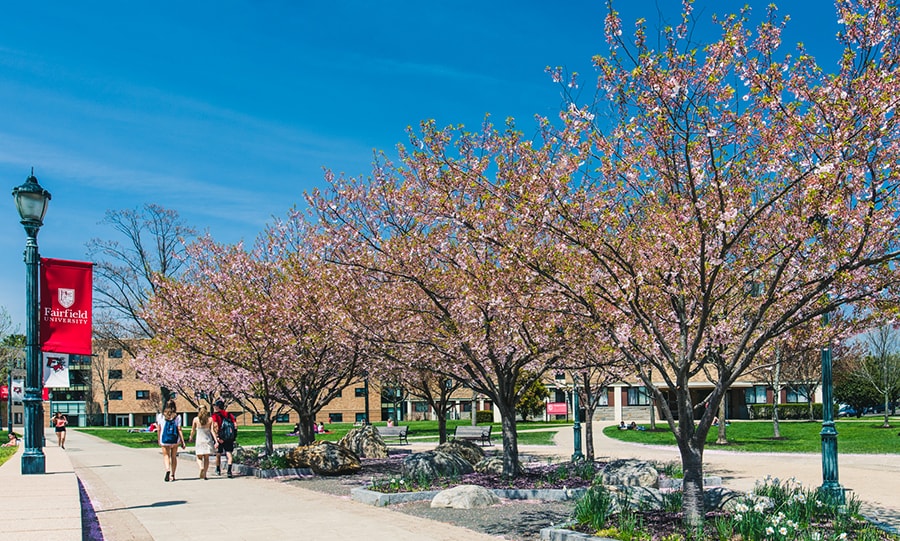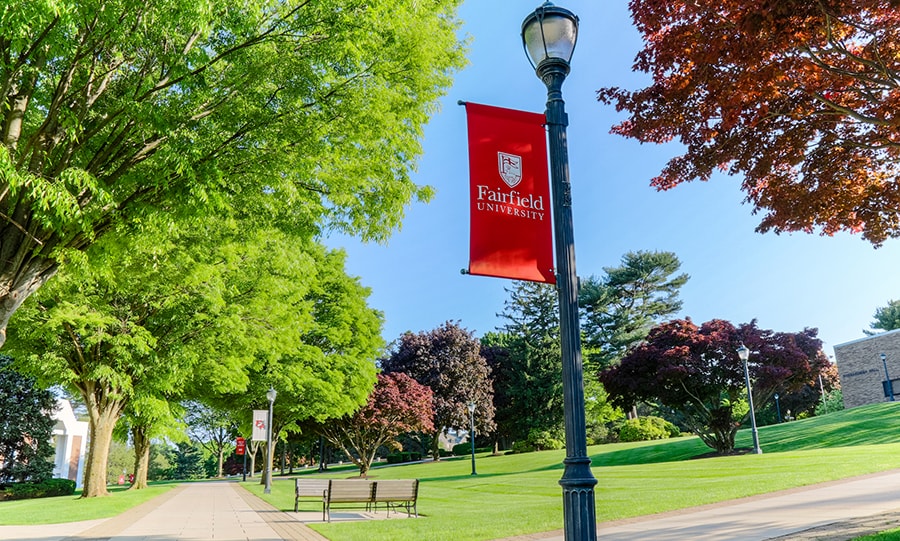On This Page
Red = Green Sustainability At Fairfield
Fairfield University’s first Campus Sustainability Plan is the collaborative work of faculty, students, and staff. The plan provides guidance and clarity of focus for the myriad of sustainability initiatives and activities that are currently underway, or have been planned for the future of our campus environment.
Please direct all comments to David Frassinelli, Chair of the Campus Sustainability Committee, at dfrassinelli@fairfield.edu.
Campus Sustainability Committee (CSC)
Fairfield's Campus Sustainability Committee (CSC), comprised of administrators, faculty, staff, and students, is charged with helping set the University's goals and evaluating its progress with regards to sustainability. Born out of the Climate Commitment, the CSC meets monthly during the academic year to discuss University projects and policies related to sustainability. In addition, the CSC helps to facilitate and communicate individual efforts to all for interdepartmental collaboration.
The results for Fairfield have led to a number of awards and recognitions and press releases. A strong green movement on campus is taking shape, with an array of campus green projects, including:
- Construction of the Fairfield Jesuit Community Center, complete with Earth-friendly components such as a geo-thermal heating and cooling, a green roof, and recycled content from structural steel to carpets
- Implementation of car and bike sharing program and installation of extensive bicycle racks across campus
- Water-conserving plumbing that includes 506 Flushometers, 783 toilets, 231 urinals, and 545 showerheads across campus
- Exchanging incandescent bulbs in dorms for compact spiral fluorescents
- 7,700 lighting fixtures that are outfitted with energy-efficient lamps and electronic starters, and another 800 LED exit signs
- Switching to 100% green cleaning products
- Using pervious pavement instead of impervious pavement in the Quick Center parking lot
- Removal of trays in the dining hall which results in a significant reduction of waste stream
- Converting HPS and metal halide lighting to LED "cutoff" fixtures
Fairfield's Green Awards
Fairfield University has received a number of awards and recognitions in recent years for its commitment to sustainability on campus.
Sierra Magazine's "Cool Schools"
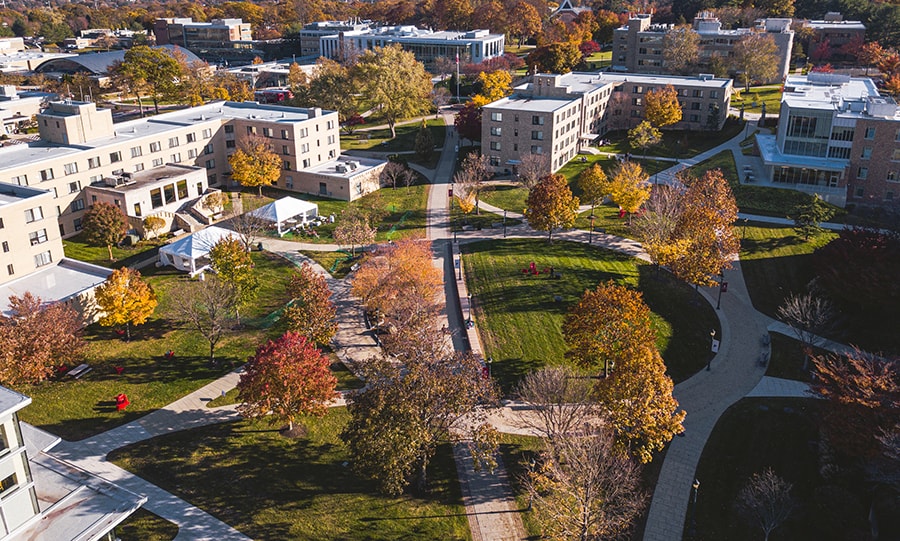
Fairfield University's inclusion on the 2010 'Cool Schools' list in the fall issue of Sierra Magazine, a publication of the Sierra Club - the oldest, largest and most influential grassroots environmental organization in the nation that provides an overview of colleges and universities nationwide committed to sustainability projects.
2010 Energy Star Combined Heat and Power Award

Fairfield's campus sustainability commitment has also resulted in a 2010 Energy Star Combined Heat and Power Award by the United States Environmental Protection Agency (EPA) for its "innovative techniques to generate power and thermal energy" on campus.
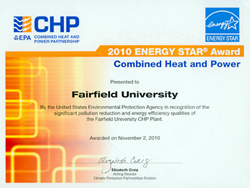
Food Waste Diversion
In August 2019, Fairfield University started diverting all food waste from its Tully dining services and catering operations. The University has already diverted over 30,000 pounds of food waste from incineration and instead turned it into renewable energy and compost. This accomplishment is the result of a partnership with Blue Earth Compost - a residential, commercial, and event food scrap collection company based in Hartford. The company has been servicing commercial customers all over Connecticut for over four years and is excited that Fairfield University has signed on.
All of Fairfield University’s food scraps are now going to Quantum Biopower, an anaerobic digester in Southington. Quantum captures the biogas produced by the scraps when they break down and burns this gas to create renewable energy that powers 700 homes. When this process is finished, the scraps are turned into nutrient rich compost that can be used to grow more plants and food.
Fairfield University’s Assistant Vice President, Jim Fitzpatrick is excited about this new initiative.
According to the U.N. Food and Agriculture Organization, food waste makes up 8 percent of total greenhouse gas emissions. If food waste were a country, it would produce the third most greenhouse gas emissions behind only the United States and China. In Connecticut alone, more than 650,000 tons of compostable material is incinerated every year.
Fairfield University is doing their part to cut down on this number and lead Connecticut toward a more environmentally sustainable future.
Facilities
Combined Heat And Power Plant (CHP)
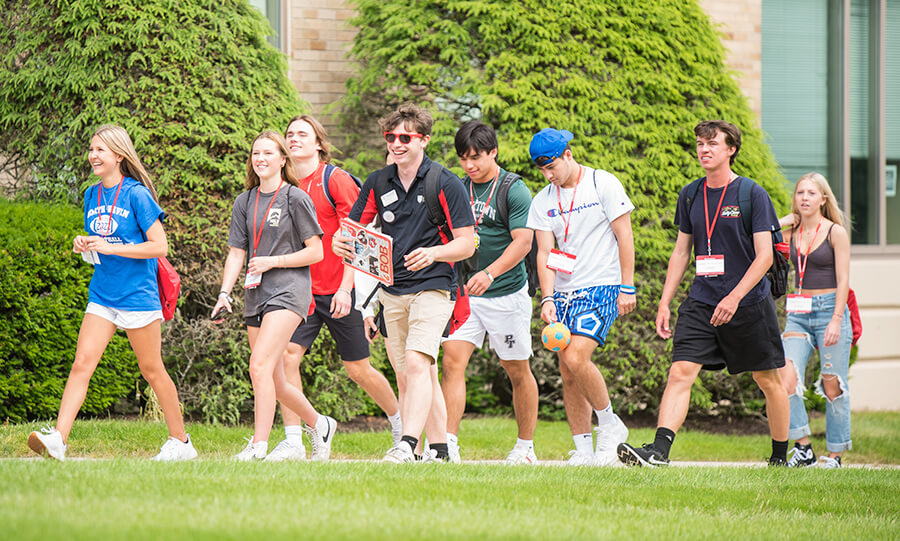
In 2007, Fairfield built its cost-effective, energy producing combined heat and power plant (CHP) on campus that provides power to the majority of buildings. The CHP system requires approximately 22% less fuel than typical onsite thermal generation and purchased electricity, according to the EPA. Based on this comparison, the CHP system effectively reduces CO2 emissions by an estimated 7,400 tons per year. This reduction is equivalent to the annual emissions from more than 1,200 passenger vehicles.
Fairfield's CHP generates nearly 95% of the power needed by the campus and produces up to 66% of the school's high temperature hot water heating and cooling supply, according to the EPA. The recovery and utilization of otherwise wasted heat from the 4.6 MW Solar Turbine has led to an estimated annual savings of $2.2 million.
The $9.5 million project was done in collaboration with United Technologies Carrier. The United Illuminating Company gave Fairfield a $2.3 million grant for the project, stemming from the State of Connecticut's Capital Grant for Customer-Side Distributed Generation Resources program.
The United States Environmental Protection Agency honored the University with a 2010 Energy Star CHP Award for the energy smart CHP, which is helping to considerably reduce emissions and demand on the region's electric grid.
Jesuit Community Center
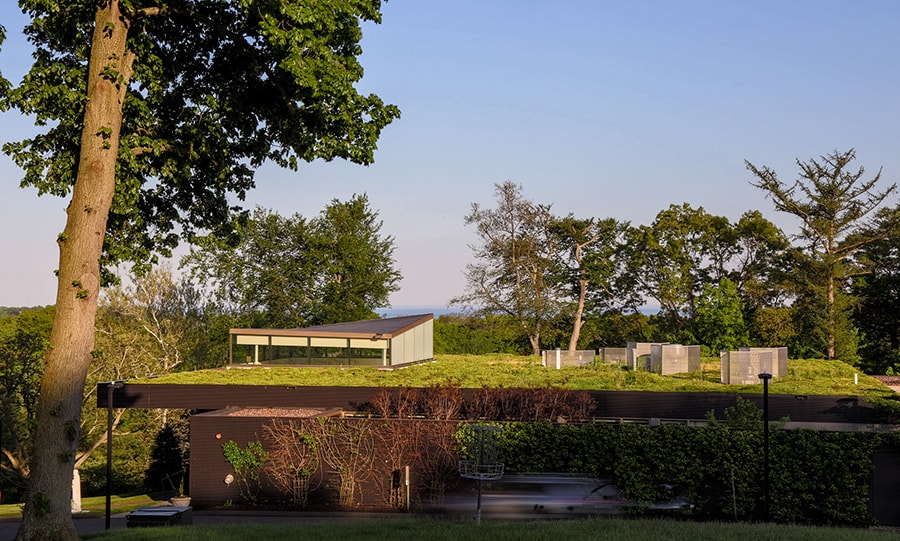
In 2009, Fairfield completed construction on an environmentally friendly home for the Jesuit community and a gathering place for spiritual direction, retreats, meetings and entertaining. The Jesuit Community Center boasts many energy-saving features, including a sod roof, with grass over the main portion of the house, that filters storm water, reduces heat loss, and keeps the building cool in the summer. The large windows in the house direct sunlight onto the dark concrete floors, using solar energy to radiate warmth through the interior. In addition, many recycled materials were used for the building's surfaces. Interior and exterior walls are also well insulated, saving energy, but also preserving a quiet atmosphere appropriate for contemplation.
The most dramatic energy-saving dimension to the new Center is the "closed loop" geothermal heating system, which provides heat in winter and cools the building in the summer based on the naturally stable temperature of the earth 400 feet below the surface. 15 "wells" have been drilled around the building, and in each well are pipes - interconnected through a closed loop network - filled with a combination of water and a non-toxic anti-freeze solution. Pumps in the house push the liquid out of the building and down into the pipes in the wells before the liquid is circulated back into the house.
In New England, the earth at a depth of 400 feet remains at a stable temperature between 50 and 60 degrees Fahrenheit. The heat pump in the building uses the temperature differential between the liquid in the loop and the ambient exterior air temperature to create heat in the winter and cooling in the summer.
The "close loop" geothermal system could save as much as half of the energy that the building would otherwise consume.
LEED The Way
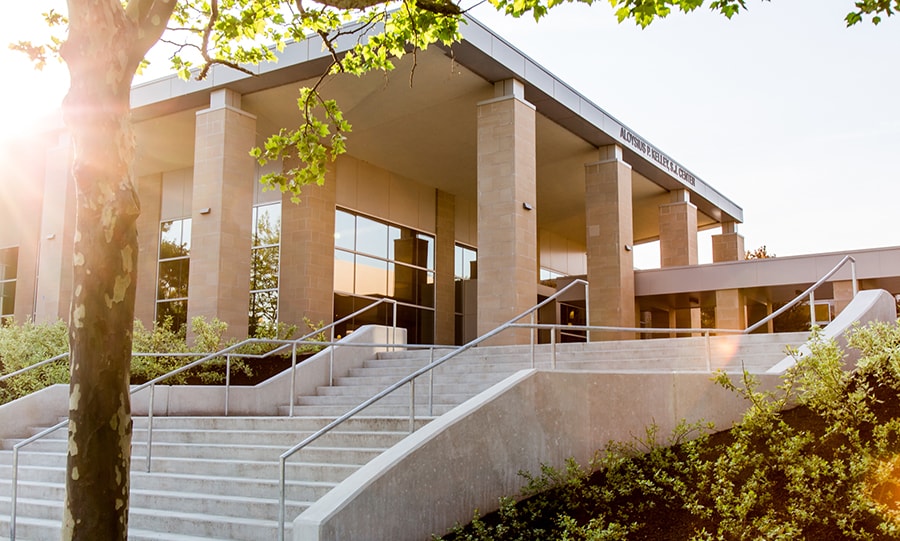
Fairfield now builds facilities with an eye to energy efficiency, recycling, and high marks from Leadership in Energy & Environmental Design (LEED), a rating system of the U.S. Green Building Council that promotes responsible building practices. The Kelley Center, for instance, features carpet tiles, access flooring, structural steel, and ceiling tiles made from recycled materials. The windows, up-lighting, and under-floor air system ensure lower energy use and healthy breathing.
As part of the President's climate commitment, Fairfield University has been designing and building new facilities to the LEED silver standard. This is the case with the $60 million residential program which has incorporated additional green roofs, energy efficient design, and building dashboards.
Fixtures & Appliances
OVF 30 Regenerative Converter
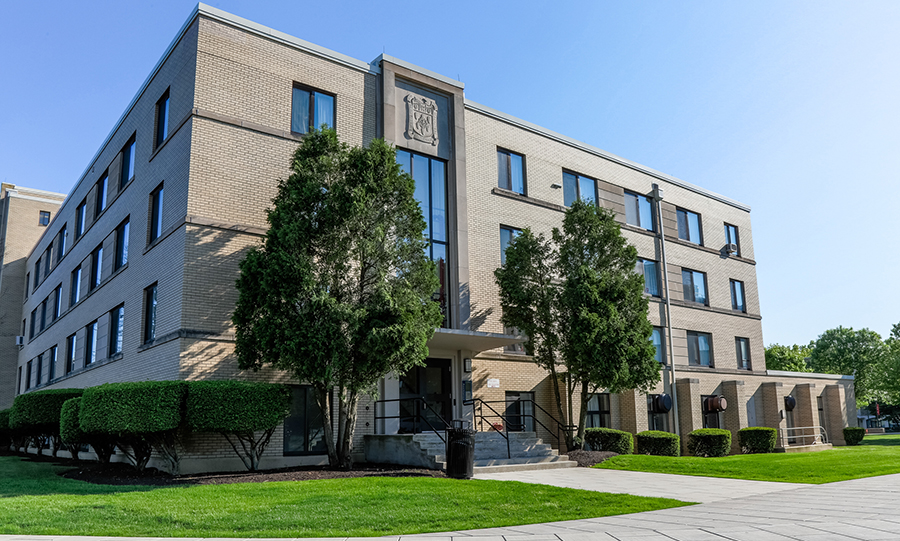
Fairfield University installed an OVF 30 Regenerative Converter in a residence hall elevator that will produce 'clean energy.' Part of a pilot project, it was the first campus elevator to be retrofitted with the device. Upon completion, the revamped elevator, located in Loyola Hall, generates about 20% to 30% of its own electricity through mechanical braking energy. Better yet, elevator energy consumption is decreased by 20% using the regenerated energy that was previously wasted and dissipated as heat.
The OVF 30 Regenerative Converter, which has a small footprint, can lead to heat emissions from elevator machine rooms being reduced by as much as 40%. By placing the created energy back into the building, heating, ventilating, and air conditioning demands are also reduced. The University also received a rebate in the amount of $4,125 from a UI rebate program for installing the environmentally-friendly technology.
LED Lighting
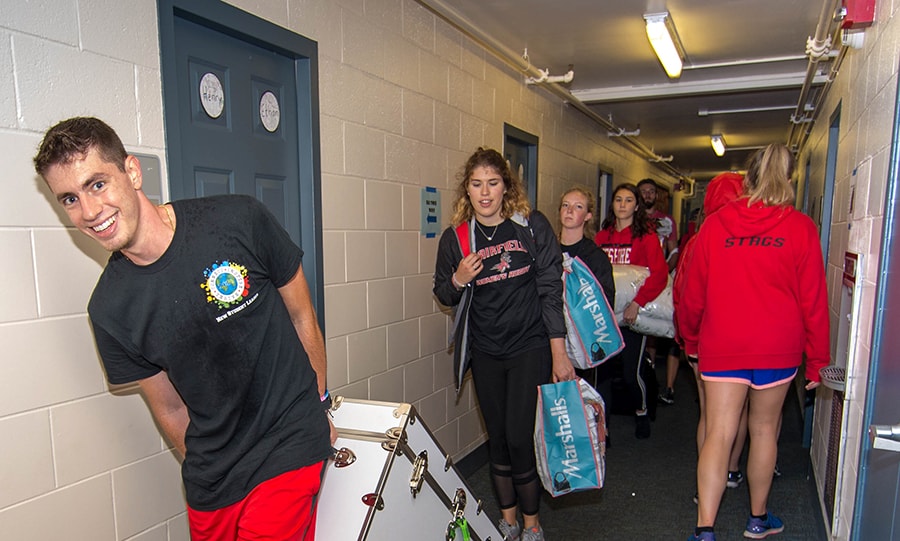
Fairfield University has adopted energy efficient LED lighting as the standard fixture for replacing exterior lighting. The first application of LED lighting was the expansion and upgrades to the Quick Center Lot. The existing 250 Watt High Pressure Sodium (HPS) fixtures were replaced with 94 Watt "cut off" fixtures. The "cutoff" feature directs the light to the ground surface to achieve approximately one foot candle per square foot. This feature greatly reduces night sky glare commonly referred to as light pollution. In addition to saving significant electrical consumption, the LED fixtures have a life span of 70,000 hours compared to 25,000 hours for conventional fixtures. Fairfield has also replaced HPS wall sconces with LED lights at all of the quad residences.
The Quick Center Lot also included the green feature of pervious pavement in lieu of the standard impervious pavement. Pervious pavement allows storm-water to percolate into the water table as opposed to going into catch-basins which increase point flows and flooding.
Laundry Equipment Replacement
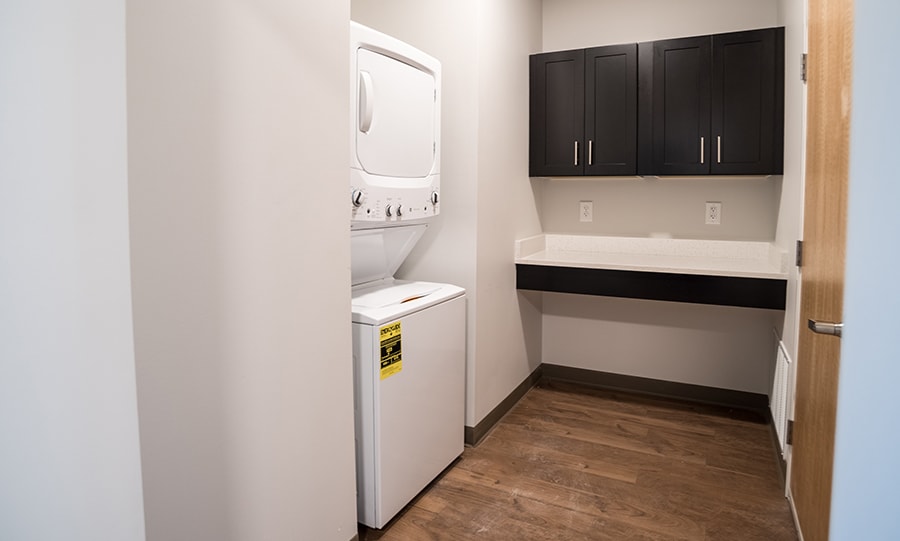
All washers and dryers for student use were replaced in September, 2010 with Energy Star products. Since the beginning of the fall semester 2010, it is estimated that over 449K gallons of water have been saved. For more information, go to laundryview.com.
